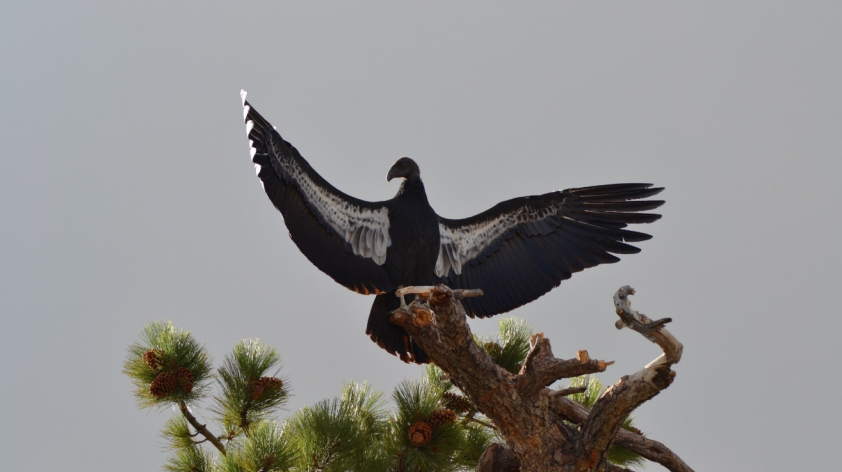
A new "crop" of California condors
Our reintroduced population of California condors in Baja California have had their best season yet! One at a time, a new cohort of 2015 wild-hatched juveniles have made their debut on the condor scene in the San Pedro Martir sierras. It took over six months before these juveniles began to show up at the staged feeding sites. And an additional two months for them to get comfortable and relaxed enough to descend among intimidating older birds. This uptick in production bodes well for the budding Baja California population.
Condors hatched in the wild learn the vital wild condor ways much more quickly than their released counterparts. Nevertheless, it is still important to keep a balanced sex and age ratio by continually importing and releasing juveniles from conservation breeding programs. The next cohort of three birds in line for release came from Chapultepec Zoo’s conservation breeding program in Mexico City. These three fledglings will be released in the spring of 2017, and later in the summer we hope to transfer 6 or 8 more juveniles from U.S. conservation breeding programs to San Pedro Martir.
With 35 free-flying condors currently in Baja California, we hope to reach our goal of 20 potential pairs of adults within 5 or 6 years.
Overall, the Baja California condor population seems to be on the right track to self-sufficiency, as the field crew has noticed that condors have been doing quite well at finding their own sources of food. This comes from observations of how much food condors store in their crop, a pouch below their neck where condors can store up to three pounds of food. Thus, a convenient way to tell if condors have recently fed is by estimating crop-sizes when birds arrive at feeding stations.
Turns out, many condors are landing at feeding stations with full crops, coming down just to socialize. An indication of the self-sufficiency of the Baja California condor population. Self-sufficiency however, makes trapping condors more difficult for the field team, as more experienced condors can recognize traps and are not hungry enough to risk being caught for a free meal!













